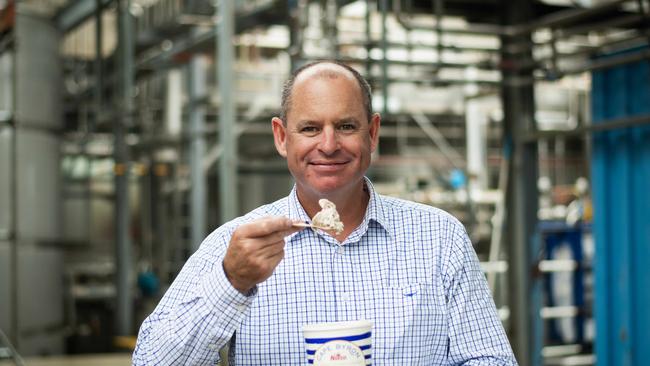Q&A: The hard hitting questions with Norco’s Michael Hampson
Last year most milk processors set prices around $8 a kilogram of milk solids — except Norco, who shocked the industry with more than $12/kg. We find out why.

In mid-2024, most milk processors set prices around $8 a kilogram of milk solids — except Norco, who shocked the industry with more than $12/kg. CONOR FOWLER sits down with CEO Michael Hampton to find out why, and get his insights on the industry.
Cast your mind back to last year, how can you reconcile Norco’s $12/kg opening price in a competitive market?
Norco is fortunate that we don’t have the balance issues that other companies have between ensuring a good return for shareholders and farmers, because for us they’re the same stakeholder group. We can afford to be a little bit more longer term in our thinking around milk pricing. We didn’t put our prices down because we certainly saw some fair reasons why the milk price needs to stay high for our farmers. But I’d say the bigger question is if we can pay $12, and we operate in a similar market, why aren’t there more domestic focused processors in Victoria paying prices that are closer to ours? We have to drag milk sometimes 800-900km. No one has to do that in Victoria, the state’s not that big. So there’s a whole range of factors at play here that sort of suggests what the price is, and this constant pegging of the price to a low commodity value, when more and more of the milk is actually finding its way into a premium, branded domestic avenue, means that someone’s getting that value and in Victoria, it’s not the farmer.
How do we entice young people to get involved in the dairy industry?
That’s a really important question to solve for. One of the biggest things about dairy is that it is much more intense, than say beef. There’s much more day to day activity, so the reward needs to be there. It needs to be an industry that’s going somewhere and can offer future prosperity, and young people need to see instant reward for their effort, and that they’re going to get an appropriate amount of value for their time, effort and investment. That needs to be driven by confidence, stable pricing and ensuring that the whole supply chain from farm to consumer is at its most efficient. Getting someone into dairy is a lot harder than what it was 10 years ago. The cost of land, equipment etc. Building a dairy or developing land, it’s just difficult. The more and more things that are added to create uncertainty need to be met with a justified and appropriate level of additional reward for taking on that risk.

There are calls for the state of the dairy industry to be a federal election issue. Do you agree? Should politicians be talking about it more?
I think everyone would like to see a little bit more focus and investment in the dairy industry. I think an industry that supports so much in the way of on farm employment, processing employment, transport and logistics employment, deserves significant consideration when it comes to macro economic policy of any government, whether it’s local, state or federal.
Do you have confidence consumers are going to eat and drink as much dairy as ever?
There’s no two ways about it, we’ll have some ebbs and flows. All of these things are cyclical. As an industry, our farmers in Australia make the best quality milk, and we turn that into some of the best nutritional products that a consumer could want. If we hold on to our promise of making really good products for our consumers, and pricing them appropriately so they can afford them, then that is going to hold us in good stead over the long term. And we need to make it clear to consumers that our product is 100% Australian owned, because I’m sure they will want to buy it.
Do you think an Australian-owned label is a good idea?
As in 100 per cent Australian shareholders, yes. That’s an important part of differentiating because consumers are not clear. We’ve done a whole heap of research that found consumers are buying products that are foreign owned, thinking that they’re Australian owned, because they used to be Australian owned 25 years ago.




